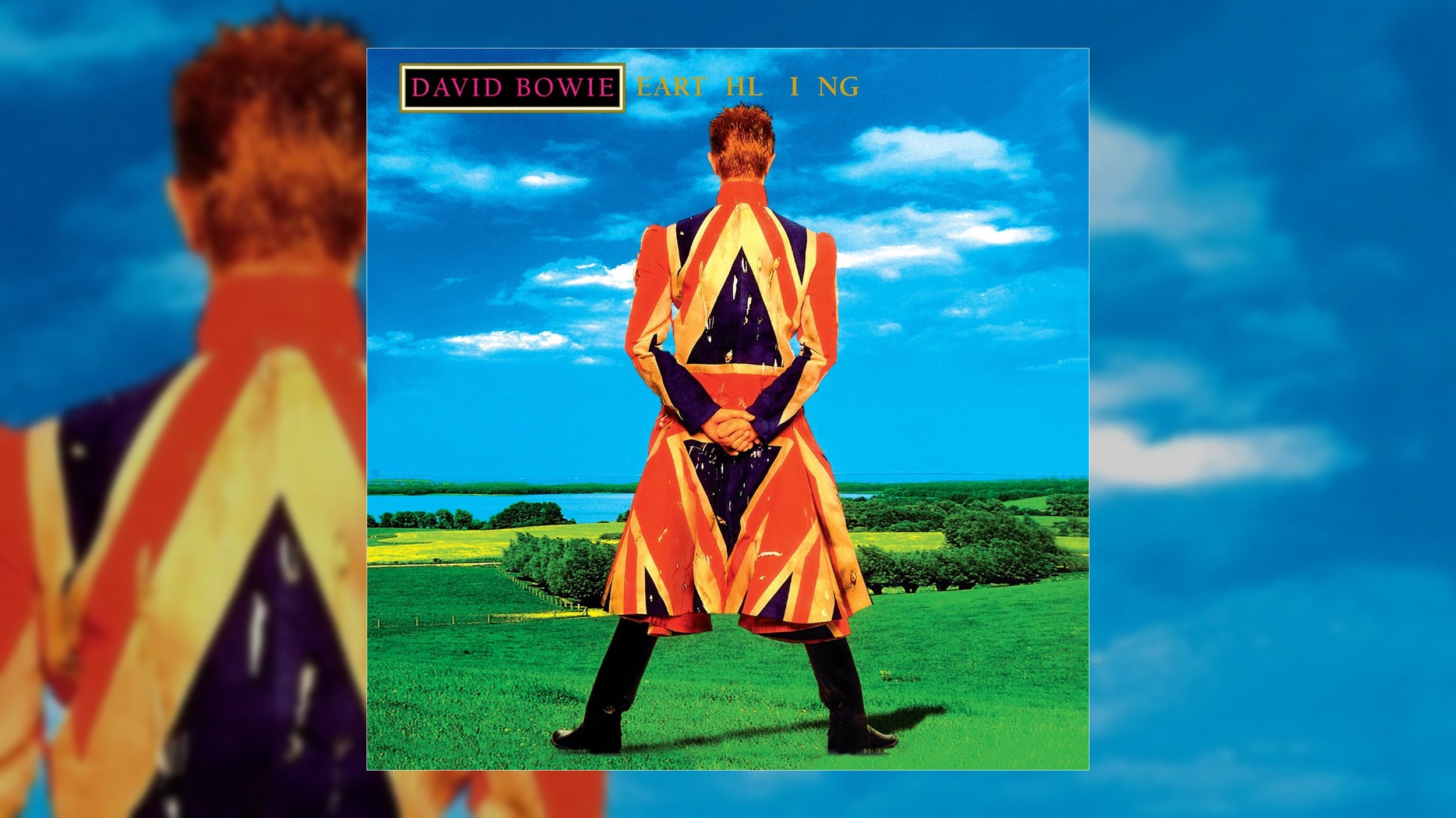Happy 25th Anniversary to David Bowie’s twenty-first studio album Earthling, originally released February 3, 1997.
When your average musical act reaches their twenty-first studio album, it’s very likely that you’ll find them mining old territory and rehashing the different phases of their career, creating a mashup of unrealized ideas and eventually alienating their fan base. The same cannot be said for David Bowie’s Earthling, which arrived after a stretch of inconsistent and frankly uninspiring releases beginning with 1987’s Never Let Me Down and ending with 1995’s Outside. Think of it as the mid-life crisis phase of Bowie’s discography.
Bowie went back into the studio five days after wrapping up his Outside tour despite the fact that he had no material ready. He and his collaborator Reeves Gabrels started writing material right after the tour ended. Bowie’s intent on this album was to change course and create something different than he had previously done. He described the album to the Seattle Times in 1997 as an effort "to produce some really dynamic, aggressive-sounding material.” He even compared this album to his 1980 LP Scary Monsters (And Super Creeps), saying "I think there's quite a link between Scary Monsters and this album, to a certain extent. Certainly, the same intensity of aggression.”
Earthling—and to a lesser degree Outside—was a meditation or as Bowie put it, a “textual diary,” of the last few years of the millennium. Bowie became fascinated with the sound of bands like Prodigy, Underworld and Nine Inch Nails. He managed to incorporate these sounds and make them his own. He told Live! Magazine, “For Young Americans, I wanted to work within the Philadelphia soul experience, and the only way that I knew was to bring what's thoroughly European about me to this intrinsically black American format. And this [album was] not a dissimilar situation. It was the hybridizing of the European and the American sensibilities, and for me, that's exciting. That's what I do best. I'm a synthesist.”
The opening track “Little Wonder” was one of the first songs Gabrels and Bowie wrote for the album. It makes heavy use of drum and bass music, a favorite style among British techno DJs at the time. Bowie called writing the track an exercise in stream of consciousness, a la “Subterranean Homesick Blues.” Upon hearing it for the first time, I got a good feeling the album was going to go somewhere good. You could actually hear Bowie shifting gears and entering into a different phase musically. He was embracing what was current while adding his voice to it. It was the album’s biggest hit in the UK, reaching number 14.
“Looking for Satellites” reassured me that Bowie was indeed back. The song harkens back to the Berlin Trilogy (Low, Heroes, Lodger) and gives the listener a sense of familiarity. It’s experimental without walking into the room and screaming, “Hey, I’m an experimental song.” This track, along with the third track, “Battle for Britain (The Letter),” doesn’t break any new ground, but they are solid contributions nonetheless and should not be viewed as filler.
"Dead Man Walking,” "Seven Years in Tibet,” and "I'm Afraid of Americans" were released as singles, but made very little traction on the charts, with the latter being the most successful, staying on the charts for 16 weeks but only reaching as high as number 66. Chart success is not a measuring stick for the quality of a song, however, and "I'm Afraid of Americans" is concrete proof. The remix of the track by Trent Reznor of Nine Inch Nails gave it immense popularity in the clubs and the video was nominated for an MTV Video Music Award. One of Bowie’s greatest gifts is the ability to give us songs that have lasting cross-generational meaning. The significance of "I'm Afraid of Americans" resonates to this very day. With the current state of our world, this song is going to be back on a lot of playlists.
Forever the trendsetter, Bowie’s “Telling Lies” has the distinction of being the first ever downloadable track by a major artist. Earthling symbolized a major, albeit subtle shift in Bowie’s career. He wasn’t consumed with selling billions of records. Instead, he was focused on pushing limits, trying new things, and being the artist he wanted to be. "I guess the common ground with all the songs is this abiding need in me to vacillate between atheism or a kind of Gnosticism,” Bowie explained to Q Magazine in 1997. “I keep going backwards and forwards between the two things, because they mean a lot in my life. I mean, the church doesn't enter into my writing, or my thought; I have no empathy with any organized religions. What I need is to find a balance, spiritually, with the way I live and my demise. And that period of time, from today until my demise, is the only thing that fascinates me.”
The beauty of Earthling is that it strips away the pretentiousness of Outside and presents us with a mature, “been there, done that” Bowie who feels relatable and more at ease. It’s a fine representation of the beginning of the final chapter of his career, and should prompt all of us to reexamine his work from Earthling right up to Blackstar (2016).
READ MORE about David Bowie here.
LISTEN:
Editor's note: this anniversary tribute was originally published in 2017 and has since been edited for accuracy and timeliness.

